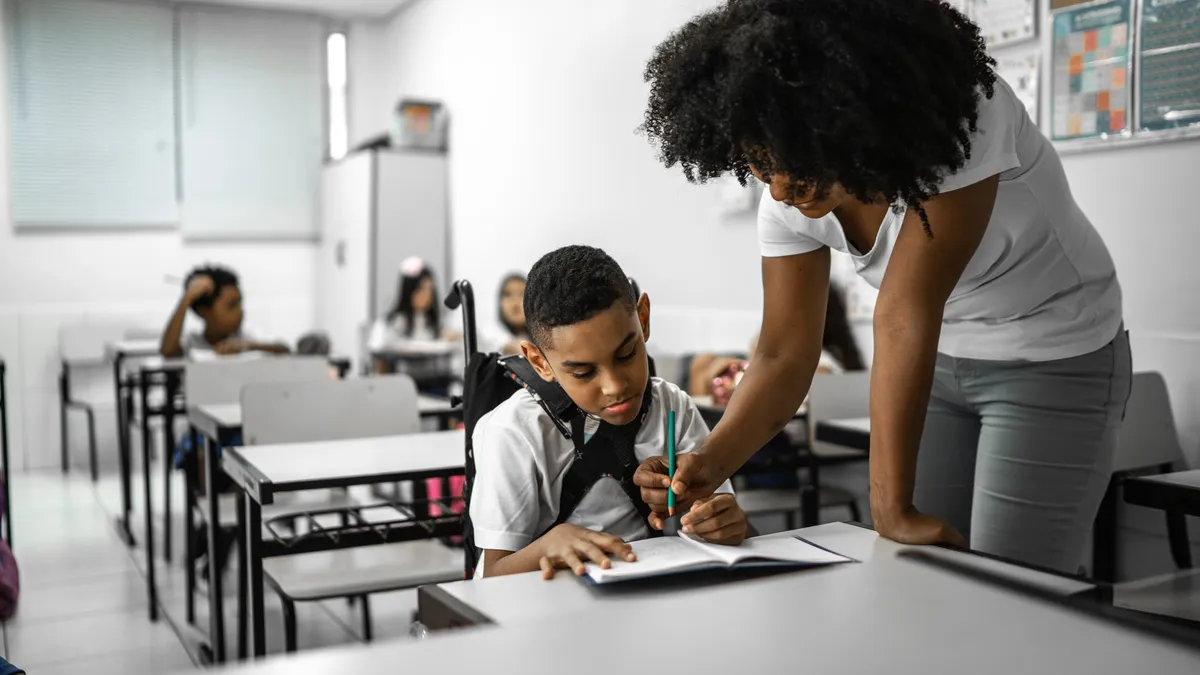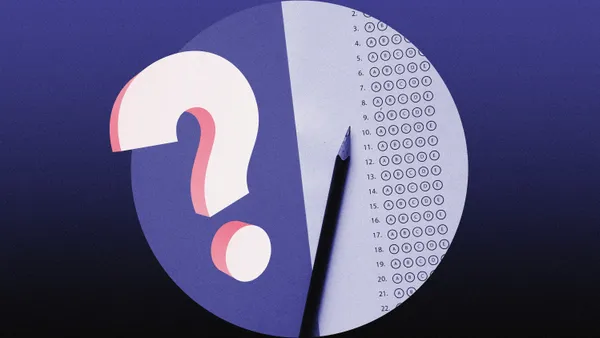Dive Brief:
- Students with dyslexia, attention-deficit/hyperactivity disorder, slow processing speed and other learning disabilities that can impact their literacy progress need explicit, systematic instruction that directly teaches concepts, according to an expert on curriculum for those with such challenges.
- Educators also need to strike a balance between the focus on phonics found in the science of reading approach and the balanced literacy philosophy that stresses whole language and building reader engagement and motivation, said Miriam Ortiz, executive director of the Division for Learning Disabilities at the Council for Exceptional Children. “It’s a misconception that people think it’s one or the other,” she said.
- To have success in this regard, schools and districts need to make a commitment to early identification and then bring targeted, intentional, evidence-based instruction, said Zabrina Cannady, director of professional learning for the Council of Administrators of Special Education. “For teachers, it’s ensuring that they have a strong foundational understanding of how students actually learn to read,” she said.
Dive Insight:
That means teachers need comprehensive training in reading instruction, Cannady said. “You can never take a blanket approach. You’ve got to look at specially designed instruction and what every single child needs when it comes to that instruction."
“Teachers have to recognize that accommodations needed by kids, they’re not extras. They’re not additional things they’ve been asked to do,” Cannady said. “They’re essential for students to be able to access the curriculum and get the reading ability they need.”
By “systematic” instruction, Ortiz said she means going from simple to more complex concepts, and “build as you go up.” By “explicit” instruction, she means directly teaching concepts like letter sounds and comprehension strategies.
“You’re modeling those things for the students and giving them opportunities to practice that and also providing feedback,” Ortiz said. “We also want to see opportunities for students to practice those skills in connected text, in books.”
With the ultimate goal to teach students comprehension and build a love of reading, educators need to keep in mind that students with learning struggles need a scaffold of support, Ortiz said.
“What I see a lot of times is that students who have disabilities get a lot of negative feedback,” she said. What they need is “error correction, in a positive way, modeling the correct way to do that activity.”
“We can’t just give instructions and assume they know what that instruction means,” Ortiz said. “If they’ve never sounded out a word, show them what that means. Give them opportunities to practice that, as well. … Having our teachers and our leaders be a little bit more patient, being able to give directions multiple times, and modeling those directions.”
States have differing approaches for making early identification of various disabilities, Ortiz said, noting that in Texas, for example, a diagnostician does “a battery of assessments,” while in Florida this is left to school psychologists.
Schools should be screening students, especially in younger grades, with brief assessments that compare their scores to national averages based on specific benchmarks they should be reaching by a certain age or grade, she said.
But the identification of a disability shouldn’t be based on one score, Ortiz said.
“Once a student is flagged, you want to dig a little deeper and reach out to the family, reach out to their prior teacher, and perform a more in-depth or diagnostic assessment,” she said. “Is it a struggle because they have a learning disability, or because they have a gap in their knowledge, or behavioral issues?”
Then, schools and teachers need to make sure that those students are not only placed in a different tier for those who need more help but also receive longer instruction time, Ortiz said. “Make sure those students receive additional minutes of instruction. The sooner you do it, the better.”
Cannady agreed that early identification is key and that educators must use screening tools that take a deeper dive. “Screening shouldn’t just be a beginning of the year thing,” she said. “Screeners need to be done at multiple points throughout the year.”
Superintendents, principals and special education directors should commit to not only prioritizing the professional learning teachers need, Cannady said, but also building a school and district culture in which families and educators are working together to ensure that students are practicing reading at home, not just in school.
“The only way that’s going to happen in some households is if schools are partners in that,” she said. “Sending books home, having open discussions about the importance of reading and where children should be at certain grade levels — it’s all a partnership between home and school.”
Administrators also need to recognize the importance of allocating resources toward literacy for those with learning disabilities, Cannady said. “One of the biggest resources that’s most valuable is time. It’s crucial that principals and superintendents recognize that time and staffing is key when it comes to implementing a successful reading program.”





 Dive Awards
Dive Awards







